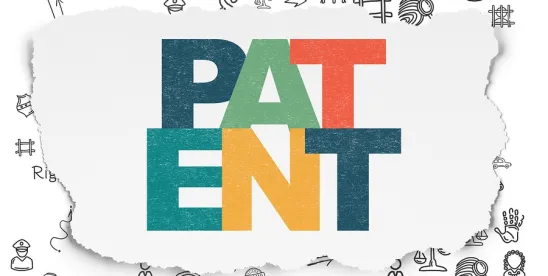On Monday, in Thryv, Inc. v. Click-to-Cal Technologies, the Supreme Court held that § 315(b) time-bar determinations are not subject to judicial review. In this 7-2 decision penned by Justice Ginsburg, with Justices Gorsuch and Sotomayor dissenting, the Court determined that time-bar determinations are unreviewable because they are “closely tied” to the Director’s decision to institute an inter partes review (IPR). As a result, § 314(d) – which states, “the determination by the Director whether to institute an IPR under this section shall be final and nonappealable” – precluded judicial review of the time-bar determination. The Court’s decision reversed the Federal Circuit’s en banc decision in Wi-Fi One, LLC v. Broadcom Corp., where the Federal Circuit had held that time-bar determinations are not “closely related” to the decision to institute, and thus subject to judicial review. The Supreme Court’s decision reaffirmed its holding in Cuozzo Speed Technologies, LLC v. Lee that § 314(d) precludes appeals of the PTAB’s decisions to institute, which broadly include “questions that are closely tied to the application and interpretation of statutes related to the institution decision.” Slip op., at 14, n. 6.
The case stems from an IPR petition filed by Thryv in 2013 seeking to invalidate a patent owned by Click-to-Call Technologies (“Click-to-Call”). See Oracle Corporation v. Click-to-Call Technologies LP, IPR2013-00312. Click-to-Call alleged that instituting the IPR was improper because it was time-bared under § 315(b), which states that an “inter partes review may not be instituted if the petition requesting the proceeding is filed more than 1 year after the date on which the petitioner…is served with a complaint alleging infringement of the patent.” Here, Keen, Inc., Thryv’s predecessor in interest, was served with a complaint alleging infringement of the patent back in 2001, but the complaint was dismissed without prejudice. See Inforocket.Com, Inc. v. Keen, Inc., No. 1:01–cv–05130 (SDNY).
PTAB rejected Click-to-Call’s time-bar argument, finding that the 2001 complaint did not trigger the time-bar because it was dismissed without prejudice. PTAB then cancelled 13 of the patent’s claims. Click-to-Call appealed the time-bar determination to the Federal Circuit, but did not seek review of the PTAB’s findings regarding the claims’ patentability. While the Federal Circuit dismissed the appeal for lack of jurisdiction twice, the Federal Circuit eventually granted a panel rehearing, in light of its decision in Wi-Fi One, LLC v. Broadcom Corp.. In Wi-Fi One, the Federal Circuit sitting en banc held that the Board erred by instituting the IPR because the 2001 infringement suit triggered the time-bar under § 315(b), and “time-bar determinations under § 315(b) are appealable,” because they are “not ‘closely related’ to the institution decision addressed in § 314 (a).” Slip op., at 4-5.
The question presented to the Supreme Court was whether an appeal of a § 315(b) time-bar determinations “ranks as an appeal of the agency’s decision ‘to institute an inter partes review’” and was thus prohibited under § 314(d), as applied in Cuozzo. The Court determined that the time-bar under § 315(b) was “integral,” and moreover, a condition by which a decision to institute rests upon. Reasoning that because challenges to a time-bar determination under § 315(b) raise “an ordinary dispute about the application of an institution-related statute,” the Court deferred to the agency to interpret its own statute and, accordingly, decided that the agency has the right to apply its statute in conformity with its interpretation. Slip op., at 8. As a result, in view of § 314(d), time-bar determinations are not reviewable by an Article III Court. The Court, however, did not foreclose the possibility of a patent owner seeking a writ of mandamus in extraordinary circumstances.
The majority seemed particularly influenced by the concept of judicial economy, noting the resources spent rendering the final written decision that canceled the patent claims. As Click-to-Call did not appeal the merits, the Court noted that the appealed procedural issue would allow “bad patent claims” to survive. In contrast, the dissent emphasized the presumption of judicial review and worried that “the Board can err; it can even act in defiance of plain congressional limits on its authority. But, in Thryv’s [and the majority’s] view, a court can do nothing about it.” The dissent further pointed out that this decision will likely cause confusion to litigants and lower courts because the Court provides little guidance as to which challenges are considered “closely tied” to the PTAB’s decision to institute, and therefore not subject to judicial review under § 314(d).
This decision highlights the importance of addressing all available issues and arguments at the institution phase of an IPR, and not saving them for appeal. In particular, patent owners should consider immediately seeking a writ of mandamus to raise clearly incorrect time-bar determinations in the future. As illustrated by the dissent, the decision could also lead to confusion about which determinations outside of § 314 are “closely tied” to the PTAB’s decision to institute and thus non-appealable.






 />i
/>i

